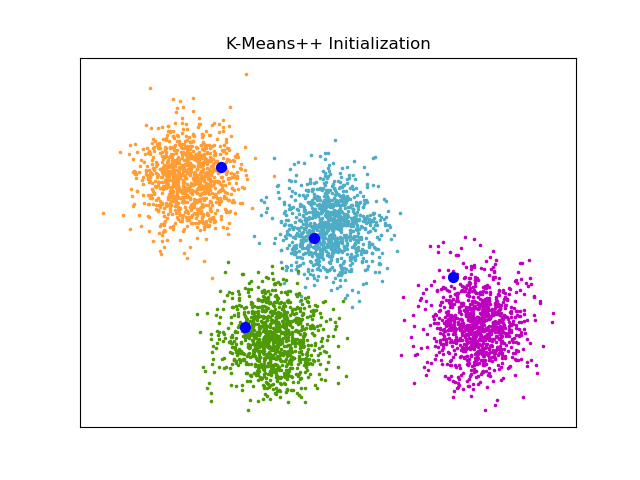Note
Click here to download the full example code or to run this example in your browser via Binder
An example of K-Means++ initialization¶
An example to show the output of the sklearn.cluster.kmeans_plusplus
function for generating initial seeds for clustering.
K-Means++ is used as the default initialization for K-means.

print(__doc__)
from sklearn.cluster import kmeans_plusplus
from sklearn.datasets import make_blobs
import matplotlib.pyplot as plt
# Generate sample data
n_samples = 4000
n_components = 4
X, y_true = make_blobs(n_samples=n_samples,
centers=n_components,
cluster_std=0.60,
random_state=0)
X = X[:, ::-1]
# Calculate seeds from kmeans++
centers_init, indices = kmeans_plusplus(X, n_clusters=4,
random_state=0)
# Plot init seeds along side sample data
plt.figure(1)
colors = ['#4EACC5', '#FF9C34', '#4E9A06', 'm']
for k, col in enumerate(colors):
cluster_data = y_true == k
plt.scatter(X[cluster_data, 0], X[cluster_data, 1],
c=col, marker='.', s=10)
plt.scatter(centers_init[:, 0], centers_init[:, 1], c='b', s=50)
plt.title("K-Means++ Initialization")
plt.xticks([])
plt.yticks([])
plt.show()
Total running time of the script: ( 0 minutes 0.098 seconds)

